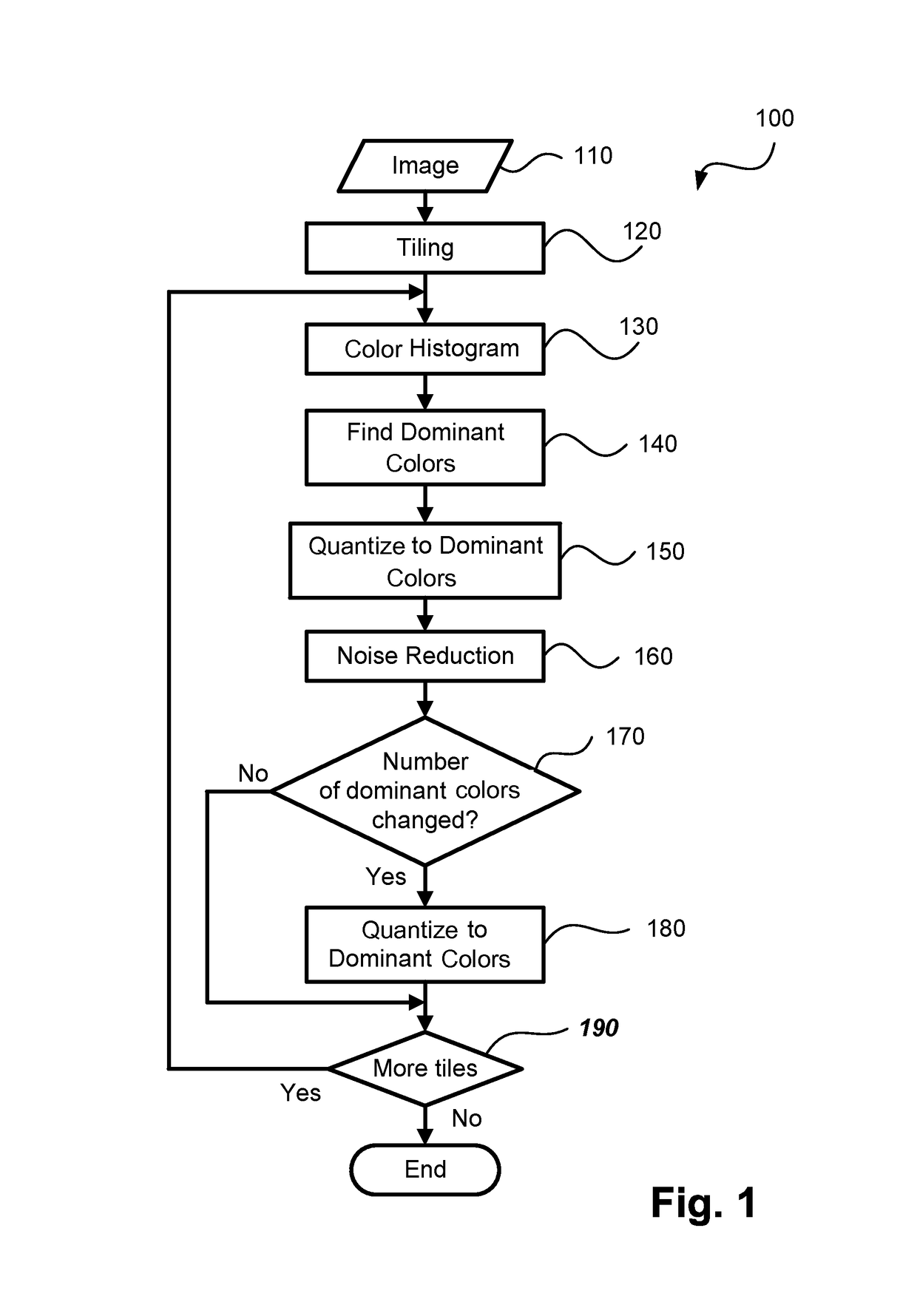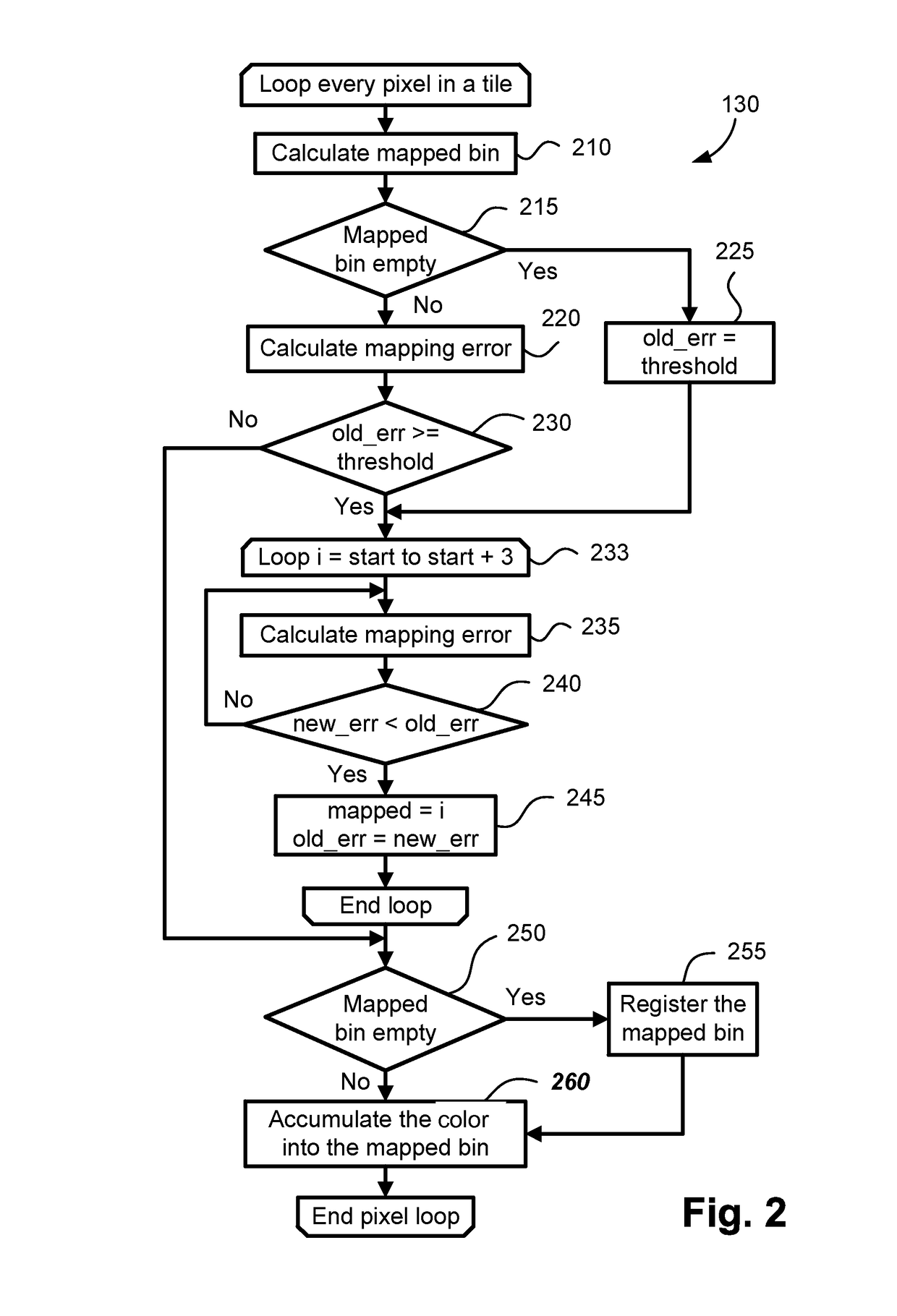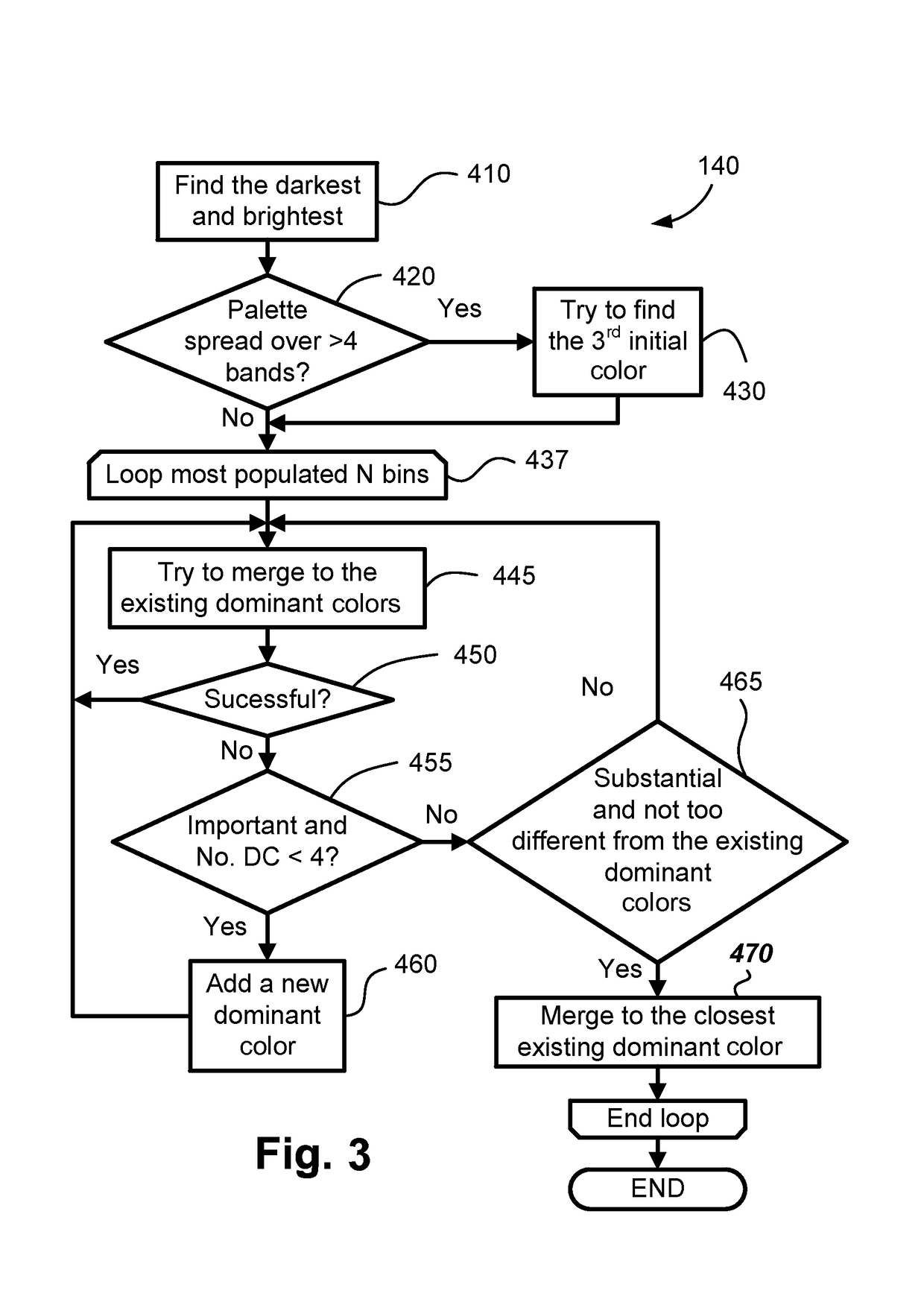Block-based noise detection and reduction method with pixel level classification granularity
a noise detection and reduction method technology, applied in image enhancement, image analysis, instruments, etc., can solve the problems of ineffective binary representation, huge degradation of scanned images, all the pixel segmentation methods mentioned above suffer from noise, etc., to reduce detection noise, improve printing quality, and remove halftone noise or registration error
- Summary
- Abstract
- Description
- Claims
- Application Information
AI Technical Summary
Benefits of technology
Problems solved by technology
Method used
Image
Examples
Embodiment Construction
[0035]The methods of detection and removal of noise and other artifacts in a scanned compound document may be implemented using a computer system 2100, such as that shown in FIG. 19 wherein the processes of FIGS. 1 to 16 may be implemented as software, such as one or more application programs 2125 executable within the computer system 2100. In particular, the steps of the methods of noise detection and removal are effected by instructions in the software that are carried out within the computer system 2100. The instructions may be formed as one or more code modules, each for performing one or more particular tasks. The software may also be divided into two separate parts, in which a first part and the corresponding code modules performs the noise detection and removal methods and a second part and the corresponding code modules manage a user interface between the first part and the user. The software 2125 may be stored in a computer readable medium, including the storage devices suc...
PUM
 Login to View More
Login to View More Abstract
Description
Claims
Application Information
 Login to View More
Login to View More - R&D
- Intellectual Property
- Life Sciences
- Materials
- Tech Scout
- Unparalleled Data Quality
- Higher Quality Content
- 60% Fewer Hallucinations
Browse by: Latest US Patents, China's latest patents, Technical Efficacy Thesaurus, Application Domain, Technology Topic, Popular Technical Reports.
© 2025 PatSnap. All rights reserved.Legal|Privacy policy|Modern Slavery Act Transparency Statement|Sitemap|About US| Contact US: help@patsnap.com



